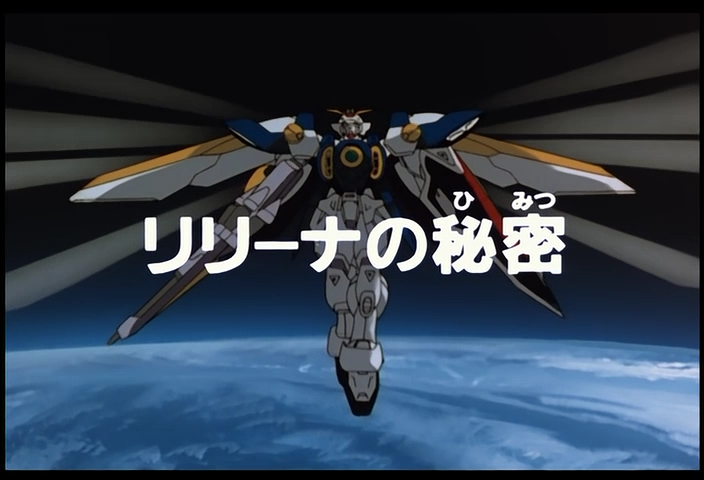Ani-May: How GUNDAM WING brought ‘sad boys in space’ to America
by Ryan Silberstein, Managing Editor, Red Herring
Twenty five years ago, on January 1 1997, the FCC’s television ratings system, with ratings from TV-Y for kids programming, up to TV-MA for shows for mature audiences went into effect. That March, Cartoon Network launched Toonami, the latest incarnation of their action animated series programming block. A few years after that, it morphed into focusing on airing anime in the U.S., starting with Sailor Moon and Dragon Ball Z. The combination of the ratings system and the need to fill a 24 hour day of cost-effective cable programming were two of the major factors that led to the import of anime into the United States.
Previously, properties like Speed Racer, Voltron, Battle of the Planets/G-Force, were imported to America from Japan via heavily localized versions. Not just dubbing of the voices from Japanese into English, but editing out references to sexuality, blood/harsh violence, and even down to changing character personalities in an attempt to appeal to American children. With the ratings system, the V-chip, and cable programming needs, came an opportunity to minimize this localization. Bandai worked with Cartoon Network to bring the latest incarnation of the Mobile Suit Gundam franchise, 1997’s New Mobile Report Gundam Wing, to American television.
In March of 2000, Cartoon Network began airing the U.S. name for the show, Gundam Wing, twice a day. In the afternoon, a TV-Y7 edited version would air, and then an ‘uncut’ version of the dub would air during Toonami’s new ‘Midnight Run’ block of programming. This was a landmark in the history of anime in the United States, and its success directly lead to dubbing and subtitles that were more faithful to the original Japanese versions.
With this promo trailer that used voiceover from Optimus Prime himself, Peter Cullen, Gundam was finally launching across the Pacific:
The original Mobile Suit Gundam series, from 1979, was the first success of the ‘real robot’ anime genre, but, watching it now, the staying power it has over me has more to do with the explorations of the horrors of war. As a teenager in post-9/11 America, it was hard to reconcile with the country’s full-tilt propaganda for the War on Terror. It’s very possible that Gundam Wing, despite its somewhat more melodramatic tone, would not have aired in 2002, given its similar themes. On my rewatch of the full series this year, I was struck by the directness with which it addresses war, terrorism, and psychology.
What I did remember from the series, especially as a diversion as I work through watching all of the original Gundam timeline, were the colorful Gundam designs. Gundam Wing, piloted by the terse Heero Yuy, Gundam Deathscythe and its pilot, the cheerful “God of Death” Duo Maxwell, Gundam Heavyarms manned by Trowa Barton, Gundam Sandrock piloted by the pacifist Quatre Winner, and Gundam Shenlong with Chinese warrior Chang Wufei at the helm each have a distinct aesthetic laid over the basic robot design.
Duo Maxwell, effortlessly cool sad boy.
Five main characters - similar to the different colors of the Power Rangers or the personality types of Hogwarts Houses - gives audience members the chance to identify strongly with a sub-brand of the series, even before you introduce antagonists and supporting characters. The five Gundam pilots each being their own distinct flavor of “sad boy” brings previous series protagonist archetypes together in the same show, and each Gundam reflects that. In my mind, the strongest combination of character and design is Duo Maxwell and Deathscythe, but the total lineup is one of the major reasons attributed to the success of the series in America.
Gundam Wing has a larger female audience than the franchise as a whole, and being able to choose from multiple sad boys means a group of friends can each lay claim to one of the main characters, as they each have their own appeal based on their personalities. And while each of them are fighting a guerilla campaign on Earth to try to free the space colonies from control, they are undercover in an aristocratic prep school, a circus, or hiding in the desert. In trying to make it feel distinct from the Gundam series that had come before, the creators of Wing sort of backed into a really odd setup that embraces both future technology in the form of giant “mobile suits” but also many characters dressing like 19th century aristocrats. It seems like an odd choice, but it does suit the series’ anti-colonial aims, serving as a reminder that those in power - in this case, on Earth - want the colonies to play ‘by the rules,’ while the only thing that actually changes the balance of power is the drastic asymmetrical warfare by the five Gundam pilots.
As I mentioned, I’ve been working my way through the ‘main’ Gundam timeline - the Universal Century - and overall, those series are ones I connect with on a deeper level than Wing. Especially the side stories, which benefit from tighter, more focused storytelling. But revisiting Wing for the first time since high school was still a rewarding experience. Being able to watch the series in full at my leisure while rediscovering so much of what I had forgotten reminded me how much television experiences, anime, and culture have changed in the last 20 years. I’m not sure if Wing holds up the same way that the more classic Gundam series seem to, but it remains an important cultural landmark. In particular, I will always treasure it as a gateway into anime that was more than Dragonball Z, and an introduction to a franchise I’ve rediscovered since the beginning of the pandemic. And I didn’t even have to talk about my recent forays into plastic model kits!



